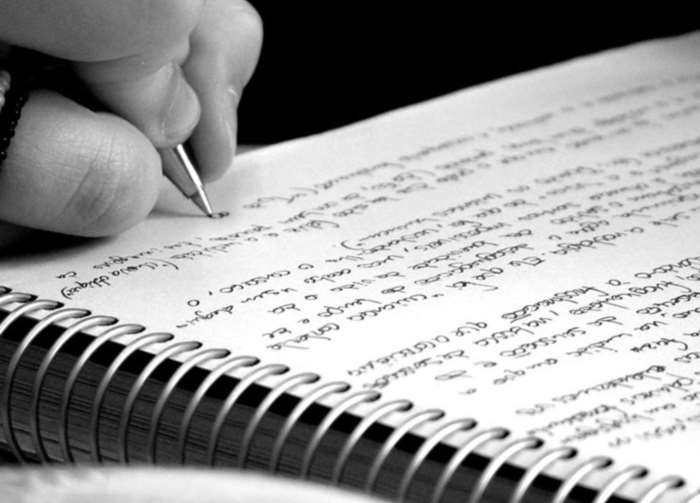Well-verified classroom reality attests that writing and writing-production tasks constitute a multilayered procedure. As such, writing deviates from other aspects of language teaching in requiring holistic and prompt recall of language input.
The differentiation of writing instruction is the productive element; irrefutably, writing entails immediate, plentiful and proper employment of linguistic skills. This is the point rendering the duty of teaching students how to write notoriously thorny for instructors. On an extensive scale, writing is highly personal; it is subjective, unique even with the very identical writer at different times or under different circumstances. Yet, everyone can be guided into becoming an effective writer.
by Marina Siskou
Subconsciously, English learners erroneously feel burdened with the presentation of impeccable pieces of written interlocution, straight from day one; a deceptive notion that might lead learners to feelings of inadequacy of means, resources and skill into delivering their thought into decent essays, articles, letters, reports, emails. In some cases, unrealistic expectations are even raised by teachers. Frequently we fail to communicate to our classes that the target is tangible, i.e. the deliverance of a delineated written message in the form of discourse is going to be acquired by all of them eventually.
I reason that tendency as follows:
For an inexplicable reason, one combines the notion of essay writing with the notion of perfection. That renders a barrier we need to defy in our routine second language practice.
Writing is discussion and exposure; these are indispensable elements of human life and relationships, intrinsic in transactions and interactions, verbal acts and communication. By default, gaps, defects, and inconsistencies arise, as they repetitively do in all the aforementioned actions. Mediocre and even disappointing outcomes of the composition are constituents of learning and acquiring knowledge. Accordingly, we furthermore equip learners with the gear to retrieve and address those inconsistencies in order to achieve optimum results.
Writing, though, is a down-to-earth, achievable and concrete notion. Compare, for instance, the effort of the teacher to clarify the intricacies of the English Language Grammar.
Poor Instruction leads to Poor Performance
Shift the essay- grading focus at the time when the teacher assumes the rater’s role.
Until the procedure completion, the teacher needs to be vested in the guide’s role. It feels counterintuitive, as teachers inevitably feel the spur to grade the general skills chart of the student. We grade papers setting out-of-time grading standards for students. We over- emphasize errors, omissions, indicative of their linguistic feedback; yet, their correction does not serve the purpose of the writing progress. Grammatical, spelling, syntactical and orthographic mistakes, lapsi calami and poor handwriting are of no interest at this time point for the benefit of developing the writing skill; here and now, they are of secondary importance, as they do not serve the intended skill developed. Our focus is upon inciting learners to acquire and adopt the mentality of the flow of consciousness. Any over-stress on the linguistic errors might steal the thunder of the content development, the focal point of that stage.
The skills of simultaneous redress, automatic correction, edit and proofreading are acquired on a later stage, only once the address of the topic at hand has become a part of the learner’s mental equipment.
Instead, every time we examine writing we are to isolate it from the student and the student’s background. The learner’s essay (not the learner) encounters the rating scale of the Camla Writing grading Grid. This tool lies on the first pages of every HAU book for certificate candidates. It summarizes the writing tenets as a universal approach. Familiarize students with that scale, in order to acquire a picture of the expected outcomes.
Violating the grading stages, the teacher might inflict learners, perpetuating this cycle that originates from the fear of exposure and judgment and lead to over-correction that might lead to poor performance; the learner ends up fulfilling the law of the anticipated prophesy: A fallacy, as the learner concentrates on abstractions that sadly, the teacher might underscore. This mentality contributes to undesirable effects; maybe learners eschew writing- associated activities and writing, ranging from procrastination to withdrawal.
Recall a classroom setting; each call for any writing task is met with opposition. Let us look into the negation to subvert that biased mindset.
As illustrated in the discussion, learners sense destined to fail in writing. Thought-provoking reaction, as they are witnessed to feel so before their contact with the topic and the genre of the essay assigned.
Writing is a synthetic area wherein learners know beforehand that they are required to activate all parts of their learning; they realize that it is the field they are corrected the most. They are prejudiced for failure, as everyone carries their soft points. Learners though, need to know that fissures do not entail the paralysis of the entire paper.
Teachers’ feelings towards Writing Instruction
Teachers might need to consider whether students subconsciously adopt their instructors’ aversion to the writing instruction. Teaching writing is a challenging call and needs to be approached with flexibility.
At this point of the discussion, let us acknowledge that writing involves a degree of skill: every piece is unique and telling of the student’s strong and soft points. It reflects their global progress, and their distinct linguistic skills. Students’ writing even reflects our skill to teach the language effectively. Yet, the individuality does not annihilate that writing can be instructed and obtained by all learners.
Every time learners fail in writing it is because they lack itinerary. They ignore the appropriate writing approach. Students omit the steps of stress-free writing, in order to release the best of their ability according to level, age and individual potential. The conclusion is that despair and inadequacy might regard the means from the mind or the heart to the blank sheet. Dearth of insistent teaching and vocabulary examination, the inadequate interaction factor is towards this repercussion. The effective instruction of the material is to be among the high-end priorities of our teaching.
The instructor is responsible for the development of students’ writing ability. Lack of resources, inspiration and competence of the teacher is mirrored upon the ultimate performance of the learners. Teachers erroneously anticipate decent writing outcomes from students as if they are endowed with the charisma from birthright.
Teaching writing demands meticulous reflection, comparing and contrasting and inference.
The Instructor is to create the previously mentioned skills from scratch. Take as granted that your learners do not have a clue about compositions, they are in the dark. This will be our common part of departure from now on. When teaching writing bear in mind that rudimentary and accidental knowledge or basic ability of ideas organization do not suffice to render them independent writers (yet).
Let us not confound two distinct realities: the essay content and its construction as a modus operandi.
The second language learner is not expected to offer original and brilliant ideas to succeed in writing. If he attains to do so, it is welcome, but it is not a prerequisite. In reality, the nature of the ideas is of no influence and the rater is not entitled to grade the essay based upon the soundness or the authenticity of the content. Second language writers can express any idea they wish to offer that addresses the topic.
When met with inability to attain that, due to means inadequacy, i.e. the vocabulary or the organization of ideas, then teachers are to aid towards the completion of that purpose. We need to effectuate it. For example, we might employ the elicitation technique or the permission of extra time.
Time management to fit writing in the English classroom
Writing-associated activities and theory of the genres demand time. Classroom time is another necessity, not in terms of quantity, as much as of quality and occurrence. Writing is to be ever-present, an indispensable part of the learning procedure. Let us allocate time wisely.
Mentally challenging tasks are to be addressed at the beginning of the sessions. If the instructor consumes predefined time correcting homework, dictation activities, drill exercises, then, as the course proceeds, no élan for writing is left neither for the learners nor for the tutor.
To the afore-exposed, add the fact that we are not to expect our students to shift from the “receptive” mode to the “productive” mode instantaneously. Students have strengths and boundaries to be respected. Learners’ mental stamina is gradually stretched.
Bring Journalistic material into the Class
Theory almost never fails, yet the challenge lies into its implementation: The practical aspect of engaging students into writing is fulfilled through journalism; digestible narratives are offered in the modern internet- dominated era for decomposition, analysis and exemplification into our classes. Journalism touches upon real life and offers a frame of reference. Another blessing journalistic narratives offer is their adaptability to the needs and limitations of the classes.
Despite their benefits, journalistic passages are underestimated as challenging and time- consuming to be tailored in ESL material. The writing syllabus is subject to adjustment, though. Instead of a repetitive textbook passage, we could substitute it with updated texts by authors of our and the students’ preference. Ignite their interest for reading. Introduce journalism as part of the curriculum that will rectify their prejudice against anything extra-curricular.
Learners should comprehend that perfect writing requires much writing. Perfect writing gets established by the post-writing tasks. “Everything can be revised, erased, or rearranged later. The courage of creation is making bad beginnings”. •



